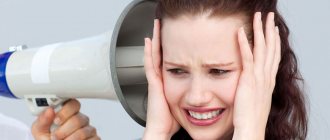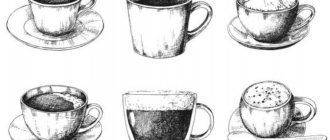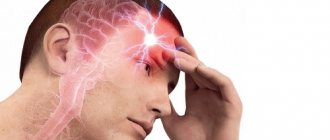What is the reason
The circumstances that lead to a person feeling pressure in the ears and dizziness are usually divided into two types:
- Natural.
- Requiring intervention.
Natural causes
Pathologies caused by this type are distinguished by the fact that they themselves disappear in a short period of time without harm to health. Usually it puts pressure on the ears and head as if it’s bursting if:
- there is a jump in atmospheric pressure;
- water entered the ear canal during diving, for example, in a lake or pool;
- Your body experiences hormonal imbalances due to pregnancy or menopause.
In the first case, you do not have to do anything, just wait until the body normalizes its condition on its own. If moisture penetrates, just lie down so that the liquid simply flows out. If you have hormonal imbalances, take a pain reliever and consult your doctor.
Are clogged ears a sign of high or low blood pressure?
Hypertension and hypotension (blood pressure that is too high or low) are the most common pathologies of the cardiovascular system and can lead to various symptoms and complications. Let's find out: if your ears are blocked, is the pressure high or low? What other diseases could this symptom indicate?
- At what pressure does it clog your ears?
- What to do?
- What does it mean if you have a headache and stuffy ears, but your blood pressure is normal?
| The use of folk remedies for high blood pressure |
| Blood pressure 120 over 100 – what does this mean and how to reduce it? |
| Treatment of high blood pressure with folk remedies |
| Treating labile blood pressure correctly |
It is known that the ears become blocked due to sudden changes in atmospheric pressure: when ascending to a hill, or when descending sharply. People have different levels of sensitivity to such changes - for some, even a trip to the subway causes mild temporary congestion. The ears may become clogged at high or low atmospheric pressure, while blood pressure readings may also change slightly due to the load on the body.
If blood pressure rises due to external factors, it returns to normal fairly quickly. Mild discomfort may occur, but it also passes fairly quickly. If ear congestion and other symptoms occur without external factors, this is a cause for concern. Most often the cause is hypotension or hypertension. There are several other diseases that can provoke this symptom.
If your ears often become clogged and other symptoms occur, such as dizziness, it is advisable to consult a doctor immediately. When diagnosing, it is important to accurately determine whether this is caused by diseases of the heart and blood vessels or the cause is other pathologies.
At what pressure does it clog your ears?
This symptom can occur with low or high blood pressure, and it can be quite difficult to determine what caused the blocked ears without diagnosis.
Why does the ear clog when there is low blood pressure? Why does this condition occur with elevated blood pressure? The main reason for the occurrence of such symptoms is not high or low blood pressure, but a sharp drop that occurs with hypertension or hypotension.
It is quite difficult to independently determine the cause of ear congestion, but you should pay attention to the presence of accompanying symptoms. They will be different for low or high blood pressure. It is worth noting that ear congestion is more common when pressure drops than when pressure increases.
If your ears are blocked, you need to pay attention to the following symptoms:
- numbness in the arms and legs, general physical weakness;
- loss of coordination of movements, dizziness, instability;
- headaches, ear pressure, irritability.
Symptoms
In addition to the main complaint - “pain in the ear radiates to the head”, there may be others. They will manifest themselves depending on what caused the symptoms. If the integrity of the eardrum is damaged, the following concerns:
- Nausea;
- Dizziness;
- Congestion in the affected ear, it may ache;
- Hum, noise or crackling;
- Loss of acuity of auditory abilities;
- Discharge with blood.
If otitis media occurs with a picture of purulent inflammation, the pain often radiates to the lower jaw or to the temple area. And also more intense with any strain, be it coughing or sneezing. The skin over this area turns red and becomes swollen. The temperature is increased. Patients often experience a sensation of fluid transfusion when turning their head.
Patients with eustachitis are bothered by pressure and a feeling of fullness. Can your ear also give you a headache? The answer to this question is an unequivocal yes. Among other things, there is unpleasant noise and decreased hearing acuity. All this is accompanied by a headache that will pulsate strongly.
These complaints can affect either one or both ears. If a person suffers from labyrinthitis, nystagmus is added to the symptoms listed above - this is an involuntary twitching of the eyes with blurred vision. Coordination problems also occur. The pain can be either permanent or transient – appearing and disappearing. At the same time, turning the neck and chewing becomes unpleasant. It may gurgle in the ear.
Inflammatory processes in the sinuses
Anatomically, the paranasal sinuses are cavity formations of the bones of the facial skull that connect to the nasal cavity. These include the maxillary, frontal, sphenoid sinuses or sinuses.
In diseases of the nasal mucosa, the inflammatory process spreads to the paranasal sinuses. This process is combined with the term sinusitis. Quite often, an isolated pathological process is identified in the maxillary (sinusitis), sphenoid (sphenoiditis) and frontal (frontal) sinuses.
There are several known most common causes of inflammation of the paranasal sinuses:
- acute respiratory viral infection, which develops catarrhal inflammation of the mucous membrane of the upper respiratory tract, including any paranasal sinuses;
- bacterial infection (staphylococci, streptococci, intestinal, Pseudomonas aeruginosa, Klebsiella, Proteus), characterized by a more severe course with frequent development of a purulent process (pus accumulates in the cavity of the frontal, maxillary or sphenoid sinus);
- non-infectious causes of the inflammatory process in the nasal cavity and paranasal sinuses, the most common of which is an allergic reaction with swelling of the mucous membrane.
Combined inflammation of several sinuses at once has a more severe course and can be accompanied by intoxication of the body. In this case, nasal congestion and headache are accompanied by an increase in body temperature.
Possible diseases
Since pressure on the ears and “humming” in the back of the head can occur independently of each other, it is logical to talk about possible diseases of the auditory analyzer, central nervous system, and heart.
Pathologies of the auditory analyzer
The cause of congestion may lie in an ear injury; the following types are common:
- damage to the outer ear;
- penetration of foreign objects;
- chemical burn;
- frostbite;
- barotrauma (occurs when landing an airplane, during shooting, that is, when there is a sharp deviation in atmospheric pressure from the norm).
According to statistics, sulfur plugs occur in 4 million people of working age and 750 thousand pensioners. A child is less susceptible to the disease than an adult, but recently more and more children and adolescents are faced with this problem (860 thousand). Sulfur is produced by special glands in the organ of hearing, and when leaving it, it carries bacteria and foreign bodies with it. This happens while speaking or chewing. But if water often gets into the ear, its hygiene is not maintained correctly, or natural removal is prevented by vacuum earbuds, wax accumulates in the ear canal and blocks the access of sounds to the eardrum.
Neoplasms of the nasal cavity
In the nasal cavity, nasopharynx, in the area of the canals communicating with the paranasal bone sinuses, voluminous tumor formations can form.
The most common of them are benign tumors, which are called polyps. Their development is not accompanied by intoxication of the body, they do not spread to other tissues and organs (metastasis).
Despite their benign course, polyps of the nasal mucosa always lead to a deterioration in the passage of air during breathing and block the outflow of secretions from the mucous membrane of the paranasal sinuses.
Effect of pressure on the ears
Many people suffer from heart and vascular diseases. In this case, the fundamental factor becomes the level of blood pressure.
A person’s well-being, the exacerbation of the disease - all this depends on weather changes (that is, there is a direct connection between a person’s internal pressure and atmospheric pressure).
Changing barometer readings affects not only sick people, but also healthy people.
In a weather-dependent person, the ears become blocked at both high and low pressure. In medicine, there are the concepts of “meteopathy” and “meteolability”, which mean a person’s constant sensitivity to weather changes.
For meteorologists, the change of cyclones and anticyclones is disastrous; their well-being gives serious concern to doctors.
External
What poses the greatest danger to the ears is a high or low atmospheric front; at what pressure they are laid; when you hear ringing or extraneous noises in your ears - these are questions that are often asked in the press and on the Internet.
External pressure depends on the specific region and time of year.
A sharp increase in the atmospheric front is a difficult test for hypertensive patients. At this time, cases of hypertensive crises become more frequent.
A low atmospheric front means rain or snow, wet damp weather, gray skies, low clouds. The arrival of a cyclone is the time when the condition of hypotensive patients worsens.
There are several aspects of the influence of external pressure on a person’s hearing and general condition:
- A small change in pressure does not adversely affect the hearing aid.
- The pressure at the starting and ending points can be very different (but provided that it changes smoothly, no painful conditions arise).
During a quiet walk up a not too high mountain or downhill, the hearing aid does not experience any stress - changes occur gradually. Then the body has time to adapt to the changed situation.
Painful conditions occur with sudden changes in pressure. In this case, the eardrum is pressed deep into the tympanic cavity. In turn, pressure also increases in the Eustachian tube and, as a result, blood circulation is disrupted and swelling of the mucous membrane lining the Eustachian tube develops.
Adaptation of the body occurs faster in stable, stable weather. Problems begin when frosts give way to thaws, when heat is replaced by prolonged rains. Such changes occur several times per season.
A sharp change in weather or climate is accompanied by congestion in the head - temporal or occipital - region. With such sudden changes, the ears become blocked and headaches occur, even in those people whose blood pressure is normal.
Internal
Internal pressure is an individual physiological indicator, which depends on the force with which the blood flow presses on the walls of blood vessels.
The onset of hypertension is considered to be an increase in values to 140/90. Critical values are 200/100.
Low blood pressure (BP) starts at 100/60.
During a hypertensive crisis, due to uneven blood flow to the middle ear, the nerve endings are excited. That is why arterial hypertension is accompanied by noise and ringing in the ears.
With hypotension, a different picture is observed. Blood accumulates in the dilated veins, small vessels stretch, putting pressure on the hearing analyzer.
Why does the back of my head hurt and my ears ring?
Occipital pain, supplemented by tinnitus, can occur as a result of pathological causes:
- Osteochondrosis – deformed vertebrae or discs quite often compress the arterial vessels that supply the brain with oxygen. As a result, the brain structures experience oxygen starvation, which manifests itself in the form of dizziness, weakness, tinnitus and pulsation in the back of the head.
- Hypertension - against the background of an excessive increase in blood pressure and the development of occipital pain, the patient experiences tinnitus, dizziness, flashing dark spots and spots in the eyes, nausea and vomiting, after which the condition improves slightly for a short time.
- Multiple sclerosis – headaches and tinnitus are additional signs of the disease. Pathology is distinguished by a number of other symptoms - weakness, disorders of the motor system, loss of coordination and memory.
- Meningitis is a serious infectious disease of brain tissue with severe symptoms. Excruciating occipital pain is aggravated by high fever, tinnitus, weakness, and in severe cases, delirium and convulsions.
- – pressing occipital pain, nausea, tinnitus, visual disturbances develop with the pressure of the liquor fluid on the brain structures. Most often, symptoms appear after being in a horizontal position for a long time (for example, in the morning or after daytime rest).
- Atherosclerosis - due to cholesterol plaques that form on the walls of blood vessels during this disease, blood does not fully enter the brain and oxygen starvation of its structures occurs. Symptoms characteristic of this condition are increasing pulsation in the back of the head, tinnitus, weakness, and dizziness.
If you identify symptoms characteristic of the diseases described, you need to go to the doctor, get examined and, if the diagnosis is confirmed, begin treatment.
What to do
Only a doctor can prescribe the correct course of treatment, but first aid options need to be known:
- If the symptoms are caused by a cold or viral disease, the first step is to get your breathing back. When the runny nose disappears, the condition returns to normal.
- Measure your blood pressure. If your blood pressure is high, you can take vasodilating medications - validol, corvalol; if your blood pressure is low, take a citramon tablet, tea or coffee.
- To balance the pressure inside the middle ear and eustachian tube with the outside and eliminate noise, it is useful to use chewing gum.
- To independently remove loose, soft, golden-colored sulfur plugs, hydrogen peroxide . Lay the patient on his side on a towel, pour 5 drops into one ear. After 10 minutes, turn over to the other side if there is no discomfort (hissing or burning usually goes away after a minute). Repeat the same with the second ear. The course of treatment is 3 days. If hydrogen peroxide and folk remedies are not trustworthy, use Stopotit, A-Cerumen, Remo-Vax, Uhonorm drops.
- is useful for quickly relieving headaches . Mix apple cider vinegar and olive oil in equal proportions, dip a piece of cloth in the resulting mixture and apply to the affected area. Keep the compress for 12-15 minutes. For migraines, it is better to alternate cold and hot lotions every two minutes. Onion juice, lemon juice, and wormwood tincture as part of a lotion are considered no less effective. Pregnant women should not get carried away with this type of treatment.
- helps with shooting pain , but it is not suitable for purulent otitis media or sinusitis (the procedure will only worsen the condition). Pour salt into a cotton bag and heat to 40 degrees. Keep on the sore spot for about 20 minutes.
- Head massage helps get rid of unpleasant sensations. Using your fingertips, make gentle circular movements clockwise from the back of your ears to the base of your skull and back of your neck. When self-massaging, you need to move your neck, not your hands, and your fingers should press tightly on both sides of the skull.
- Therapeutic exercises will help eliminate pain due to cervical osteochondrosis. Isometric exercises do not require turning the head or swinging. You need to apply light pressure on an area of the body, and the patient must resist the pressure with muscle strength. Such a complex must be alternated with a dynamic one, where head movements already play a key role. Repeat the exercises every morning. But it is better to perform them under the supervision of a doctor.
Treatment
Therapy will be aimed at eliminating the cause of discomfort. You should definitely consult a doctor. An accurate diagnosis is necessary.
https://www.youtube.com/watch?v=swfZAuUSETQ
Treatment, of course, involves taking medications. Patients are prescribed painkillers and sedatives to help cope with painful sensations. Sometimes special medications are required to reduce tone.
To eliminate pain and stop the inflammatory process, drops are used:
- Otipax - used for otitis media. These drops are famous for their antiseptic properties and successfully fight the virus.
- Otinum is prescribed if a complication occurs after the flu. The drops have a strong analgesic effect.
- Sofradex is an antibiotic with broad action. Destroys microorganisms.
During the treatment period, stressful situations are excluded. Sedatives eliminate nervous excitement and have a positive effect on well-being.
Inpatient treatment is usually not required. Unless, of course, the reason is a concomitant disease. Therefore, treatment procedures can be carried out at home.
What to do if one ear is blocked; what to do if your ears become blocked due to pressure; Is it possible to relieve pain and stabilize well-being?
Since ear congestion is not an independent disease, but only a manifestation of a pathogenic process in the body or the result of an injury, the root cause is eliminated. If your ear gets blocked suddenly, unexpectedly, doctors recommend:
- Apply a warm towel (a bag of warm salt) to the sore ear and lie there for about an hour.
- Rinse your sinuses with a weak saline solution.
- To eliminate congestion, suck on a piece of candy, yawn deeply, or, placing your palms tightly to your ears, pull them away sharply (this exercise is repeated several times until a characteristic click in the ear).
- If water gets into your ear, you can jump on one leg, pressing your ear tightly to your palm.
Herbalists and other books of a similar nature provide recipes on how to cope with the situation yourself.
For inflammatory processes, baked onions or garlic, anise tincture, and homemade geranium leaves are used. What works well for pain and congestion is propolis tincture or ointment.
A cotton swab is moistened in the tincture, rolled into a ball and placed in the ear.
The first and main step is measuring indicators. High or low pressure - both have some similar symptoms (for example, in both the first and second cases, the ears are blocked).
Drugs are started to be taken when blood pressure values have risen sharply or remain elevated for a long time.
Before calling a doctor, you can apply a napkin soaked in vinegar to your feet, immerse your hands in a bath of warm water, and take several deep exhalations and inhalations.
The following medications are prescribed to lower blood pressure:
- "Concor", "Coronal" - belong to a number of beta-blockers;
- "Indapamide", "Hypothiazide" - calcium antagonists;
- "Capoten", "Enalapril" - ACE inhibitor.
For hypotension
The main condition for the well-being of hypotensive patients is sleep lasting at least 9-10 hours. Lack of sleep can lead to fainting and loss of consciousness.
Loose leaf tea and a small amount of high-quality natural coffee help relieve the condition. But this is “one-time” help, albeit fast and effective.
Coffee becomes addictive over time; the body requires increasingly larger doses, and this leads to disorders of the nervous system.
If you have hypotension, you can and should eat salty foods. For headaches, it is enough to eat a piece of herring or drink a glass of water with a teaspoon of salt dissolved in it. The condition is stabilizing.
If your ear is clogged with low blood pressure, take ginseng and lemongrass, rose hips; Brew tea with leaves of lemon balm, wormwood, and chamomile. Even simple water with a slice of lemon or lemon juice will improve your well-being.
For arterial hypotension, the use of sedatives and nootropic drugs - “Glycine”, “Persena”, “Armadina” is indicated. If your health does not improve, do not delay contacting an ENT specialist.
Ear stuffiness due to pressure
- 1 Causes of the disease
- 1.1 Rhinitis and ear congestion
- 1.2 Arterial hypertension and high blood pressure
- 1.3 Salpingootitis
- 1.4 Low blood pressure
- 2 How is blood pressure measured?
- 3 What to do: treatment of ear congestion from pressure
- in the presence of sulfur plug;
- if sinusitis progresses (inflamed maxillary sinuses);
- if the facial nerve is in the stage of inflammation.
Have you been struggling with HYPERTENSION for many years without success?
Head of the Institute: “You will be amazed at how easy it is to cure hypertension by taking it every day.
When there is a sudden change in pressure, a person feels unpleasant pressure on the eardrums. It is important for a person to understand at what pressure the ears become clogged. It is natural to feel stuffy ears when riding in an elevator or taking off on a plane. This difference between causes can be a major factor in determining whether a patient's blood pressure should be lowered or raised.
Causes of the disease
Due to sudden changes in internal (intra-auricular) and external (atmospheric) pressure, a person tends to feel these changes. But in some circumstances, such differences are considered normal (when landing or taking off an airplane, when descending in an elevator). In other cases, they may indicate the presence of a disease. This process can be dangerous because pressure on the eardrum can sometimes cause temporary or permanent hearing loss. With sinusitis, acoustic neuroma, and otitis media, ear congestion is observed. At the same time, the person’s blood pressure is normal. However, it is impossible to independently diagnose and treat these diseases effectively. A wax or water plug may simply form in the ear, which also leads to congestion. After all, wax and water that gets into the ear put pressure on the tympanic septum with great force and for a while a person loses the clarity of hearing.
Return to contents
Rhinitis and ear congestion
Rhinitis can cause uncomfortable pressure in the ears.
With rhinitis, in addition to the symptoms of ARVI, nasal and ear congestion is observed. This is not a separate disease, but a symptom of a complex illness. With rhinitis, a sensation of a foreign object (“plug”) appears in the hearing organs. This sensation is associated with the physical structure of the auricle. Namely, with the fact that when the eustachian tube swells, a vacuum reservoir is created near the eardrum. In addition, sudden blowing of the nose causes short-term increased pressure in the auricle. Therefore, you need to blow your nostrils one by one. In addition, a person feels ear congestion:
Return to contents
Arterial hypertension and high blood pressure
If a person has arterial hypertension, then circles appear before his eyes and ear congestion is observed. This occurs due to pressure surges. And at elevated levels, changes in blood pressure are felt. Since blood does not flow through narrowed vessels, the pressure on the walls of the vessels is maximum. Compresses the occipital and temporal parts of the head. And, as a result, a person complains of pulsating in the ear, it begins to hurt as if from the inside.
Return to contents
Salpingootitis
Inflammation of the ear can lead to hearing loss.
The causes of this disease are the same as for otitis and rhinitis - pressure on the eardrum or inflammation in the ear. With salpingootitis, the presence of a foreign object or water in the ears is felt. But unlike otitis, with a complex form of salpingootitis (purulent), fluid with pus accumulates in the organ of hearing. Treatment must be immediate, because if not treated properly, the eardrums can atrophy, leading to irreversible hearing loss.
Return to contents
Low pressure
With low pressure, ear congestion is very rare. It happens that with low blood pressure a person faints and faints. After he comes to his senses and gets up, he plugs his ears. It is during a sharp jump that a tingling sensation is felt in the ears, and there is a feeling of congestion. In addition, if a person’s limbs go numb, they feel dizzy, weak, and their hearing decreases, this is low blood pressure.
Return to contents
How is blood pressure measured?
With normal blood pressure, the indicators will be standard - 120/80 mm Hg. Art. Everything above and below the norm is a deviation. But you still need to take into account age and gender indicators.
Our readers successfully use ReCardio to treat hypertension. Seeing how popular this product is, we decided to bring it to your attention. Read more here...
Pressure readings cannot be taken into account if the procedure is performed incorrectly.
A special medical device - a tonometer - will help you find out the exact blood pressure reading. All indicators that are lower indicate hypotension, and higher indicators indicate hypertension. When taking measurements, the diagnostician places the cuff of the device just above the elbow, fastens it and begins to slowly pump air. The diagnostician applies a stethoscope to the vein under the tonometer and listens to the blood pulsating through the veins. At the moment of maximum pressure, the doctor determines systolic blood pressure, and at minimum pressure, diastolic blood pressure. But there are also electronic tonometers that will help you measure blood pressure faster. All you need to do is attach these devices to your hand and press the start button. Both devices are equally effective.
First aid
Before contacting a doctor, you can try to get rid of the symptoms yourself. To do this, the following measures are taken:
- They make swallowing movements to balance the pressure - chew gum, suck a lollipop, drink water from a straw;
- If your ears are blocked due to a runny nose, use vasoconstrictor medications;
- If the patient knows that he has hypertension, he needs to measure his blood pressure and, if necessary, take the prescribed antihypertensive drug;
- Pain syndrome can be relieved by analgesics or NSAIDs, however, they will erase the brightness of the clinic, which will complicate the diagnosis.
If measures are ineffective, assistance should be provided by a qualified specialist.









